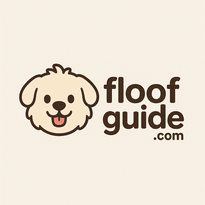Is your furry friend constantly scratching, licking, or suffering from skin issues? Allergies could be the culprit! Figuring out the right dog food can feel overwhelming. This guide helps you navigate the world of allergy-friendly dog food and find the best option for your itchy companion.
Understanding Dog Food Allergies
Dog food allergies are often triggered by common ingredients in commercial dog food. The immune system mistakenly identifies a specific protein as a threat and overreacts.
- Common Allergens: Beef, chicken, dairy, wheat, and soy are frequent offenders.
- Symptoms: Watch out for excessive scratching, skin rashes, ear infections, vomiting, or diarrhea.
If you suspect your dog has food allergies, consult your veterinarian. They can help confirm the diagnosis and recommend an appropriate elimination diet to pinpoint the specific allergen.
Types of Dog Food for Allergies
Several types of dog food can help manage allergies. Let's explore the most common options.
Limited Ingredient Diet (LID)
LID dog foods contain a short list of ingredients, making it easier to avoid potential allergens. They often feature a single source of protein and carbohydrate.
- Benefits: Simplifies the process of identifying allergens and reduces the likelihood of a reaction.
- Example: A LID food might contain only salmon and sweet potato.
- Important Note: Always check the ingredient list carefully. Even seemingly "limited" ingredient foods can sometimes contain hidden allergens.
Novel Protein Diet
Novel protein diets utilize protein sources that your dog hasn't been exposed to before. The idea is that your dog is less likely to have developed an allergy to a protein they haven't eaten previously.
- Examples of Novel Proteins: Duck, venison, rabbit, and kangaroo.
- Benefits: Provides a new source of protein that is less likely to trigger an allergic reaction.
- Remember: Rotate protein sources regularly after you've confirmed the novel protein is safe for your dog. This may help prevent them from developing new allergies.
Hydrolyzed Protein Diet
Hydrolyzed protein dog foods contain proteins that have been broken down into very small pieces through a process called hydrolysis. This makes them less likely to be recognized by the immune system, reducing the chance of an allergic reaction.
- Benefits: Often considered highly hypoallergenic due to the altered protein structure.
- Considerations: Hydrolyzed protein diets can be more expensive and may not be as palatable to some dogs.
Grain-Free Diets: Are They Necessary?
While many owners switch to grain-free diets for allergies, grains are not the most common allergen. If your dog is allergic to grains (like wheat), then a grain-free diet is helpful. However, focus on identifying the specific allergen, not just eliminating entire food groups.
- Worth Noting: Recent studies have linked grain-free diets to a higher risk of heart disease in some dogs. Talk to your vet before making this switch.
Choosing the Right Food
Finding the right food is a process of elimination and observation. Here are some tips:
- Consult Your Veterinarian: They can guide you through the process and rule out other medical conditions.
- Read Labels Carefully: Scrutinize ingredient lists and be aware of potential hidden allergens.
- Introduce New Foods Gradually: Transition slowly over a week to avoid digestive upset.
- Keep a Food Journal: Track your dog's symptoms and the foods they are eating to identify potential triggers.
- Be Patient: It can take time to find the perfect food, so don't get discouraged! It can sometimes take 8-12 weeks of being on a completely hypoallergenic diet before improvement is noticed.
Finding the right dog food for allergies requires patience and a willingness to experiment. By working with your veterinarian and understanding the different types of allergy-friendly dog food, you can help your furry friend find relief from those irritating allergies!

